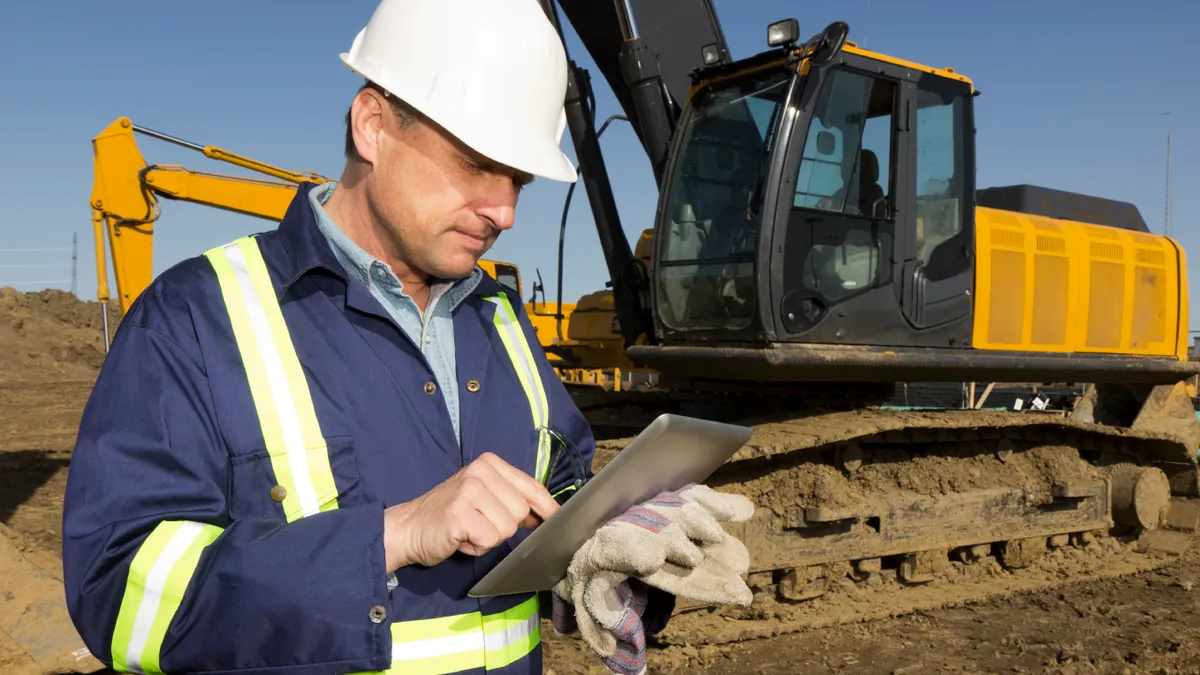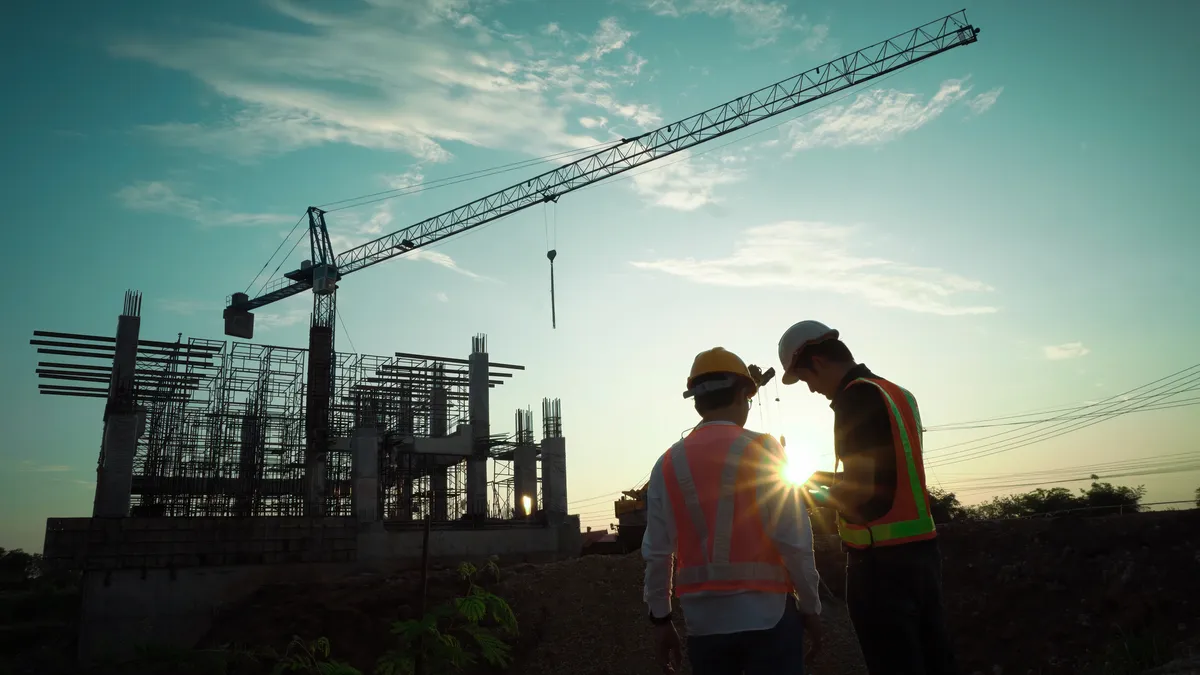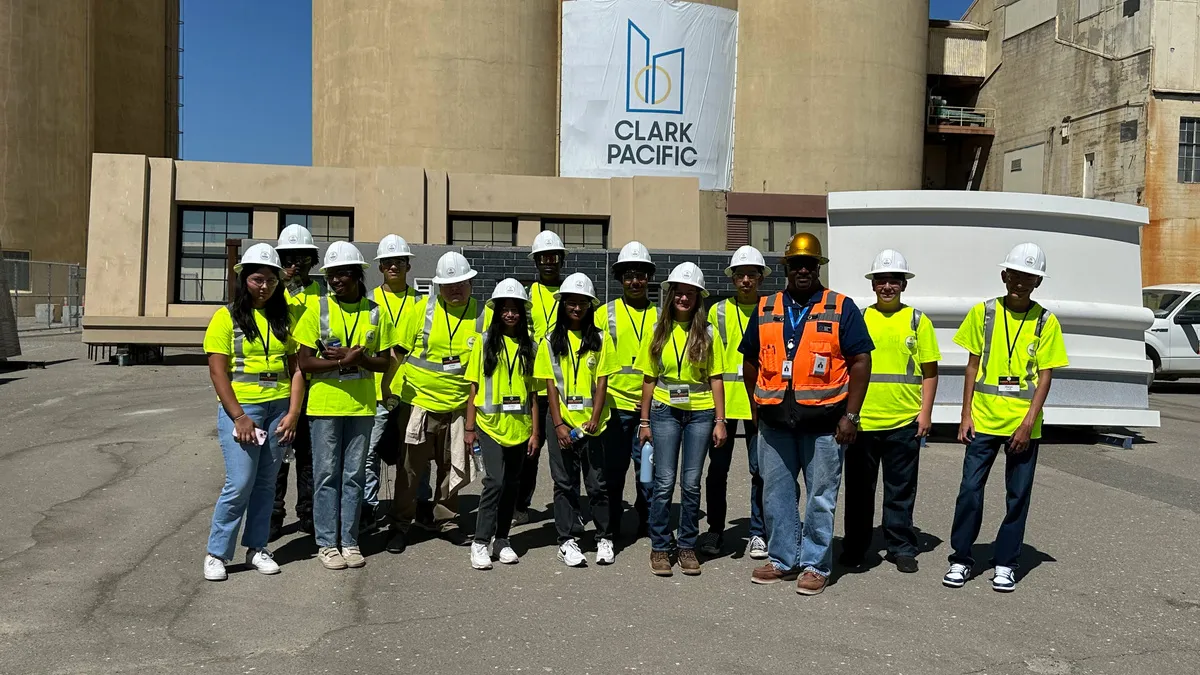This feature is a part of "The Dotted Line" series, which takes an in-depth look at the complex legal landscape of the construction industry. To view the entire series, click here.
It’s finally happening. Robotics, artificial intelligence, virtual reality and other cutting-edge technology that has empowered a number of industries has undeniably made its way to construction sites. But with new tools come new risks and new ways to manage those risks.
Robots that can lay bricks, hang sheetrock and tie rebar, as well as vehicles that can act via remote control or even autonomously, are in various stages of development and use, and it couldn’t come at a better time, according to some industry onlookers who expect these technologies to increase efficiency, up production and solve problems spurred by rising costs and a skilled labor shortage.
Yet, the availability of workers with the skills to manage such advanced technologies is also short. “The tools are there,” said attorney Natalie Pierce, co-chair of the robotics, AI and automation industry group at Littler Mendelson, “but the people ready and willing to implement these tools are not as available.”
Even so, she added, new methods of training people should help accelerate the rate of future adoption, as millennials and Generation Z workers entering the job market already more technology savvy than older demographics.
Adjusting for new technology will require contractors to make sure they are aware of all associated risks and responsibilities when it comes to their contracts and agreements.
Contracts and risk
“In one sense, they are just like any other new equipment,” said attorney Thomas McLish of Akin Gump Strauss Hauer & Feld in Washington, D.C., of the new generation of construction tools. “You have to worry about allocation of risk.” If digital or computing errors cause damage, he said, a contractor’s responsibility would likely be the same as if the equipment in question was a bulldozer or crane.
“Agreements,” Pierce said, “are not going to indemnify the user of the tool.”
But they can clarify the relationship between a contractor and third-party vendor or subcontractor that supplies the technology. For example, in the case of an interior framing contractor that uses a robot to lay out a space, who will be responsible for operating the robot? Is the vendor just providing the robot or someone to operate it? Who is responsible for maintaining the equipment, updating the software and uploading the measurements or CAD data on which the machine will base its layout? Who will be responsible for any damage done as a result of the robot’s performance, and who will absorb the cost?
There’s always a human element, so all of these responsibilities, McLish said, need to be defined in the agreement between the vendor and the sub.
The vendor or contractor responsible for bringing the new technology to the jobsite should also have the proper insurance coverage for robotics, autonomous equipment or other technology that will be used on the project. However, this cyber insurance tends to be more expensive than standard liability coverage, and it’s still not something contractors and their insurance brokers might be familiar with.
“My guess,” said attorney and cybersecurity expert Michelle Schaap with Chiesa Shahinian & Giantomasi, “is that insurance for the construction industry hasn’t caught up."
And even though supply is short, contractors are increasing their risk if they don’t have trained workers to both monitor the equipment’s performance and take over if necessary, Schaap said. For example, if the autonomous functions of a bulldozer fail, someone trained in its operations needs to be able to jump in.
If a contractor using these tools doesn't have a human worker supervising and things go awry, Schaap said, it creates a new discussion of who is responsible for the resulting defect or damage or even human injury if things get out of control. “You can't just say it's the bricklaying machine's fault,” she said.
Another potential risk here, Schaap said, is when companies have some piece of automated equipment and don’t keep training — and retraining — humans to use it. They need to keep their skills sharp, she said, if they do have to assume manual control of the operations.
Intellectual property rights
There are also serious issues with respect to intellectual property rights, McLish said. “If you’ve got a robot … on a project, then who owns that data when the project is done?” In order to do its job, the bot could be storing privileged or even sensitive information, depending on the project. A robot that lays a floor of a building, for instance, has information that could be valuable to third parties.
“For example, if the owner pays a contractor to use a robot to lay out each floor of my building, the robot has now learned something that might be valuable to the owner’s competitors who want the same floor layout,” McLish said. “I, as the owner, do not want my competitor to obtain that information cost-free simply by hiring the supplier who has the robot that learned the skill on my job .”
If that’s something the contractor or owner does not want to happen, he said, then its prohibition needs to be made clear in the agreement with the vendor or subcontractor.
Cyber threats
Speaking of protecting information, doing work for the federal government can raise new questions about security. One of the things the federal government is concerned about, McLish said, has to do with software and infiltration by Russia, China or some other bad actor state. Federal officials want to know, he said, where software comes from and make sure its origin is from a friendly country so that it’s not been manipulated to report back information.
Similarly, McLish said, the government is going to be concerned about robotics, automation or artificial intelligence that is of foreign origin making its way onto one of its construction projects.
Usually, before being allowed to bid on many projects, contractors must agree to and sign off on Federal Acquisition Regulations (FAR) requirements related to the use of foreign technology. So, contractors should know the source of their technology or risk violating federal law. It’s also a good idea, McLish said, to have subcontractors or vendors warrant that what they’re providing meets these requirements as well.
Then there are the domestic security risks. The plethora of cloud- and internet-connected devices have created, Schaap said, new “attack surfaces,” or entry points, for unauthorized users and hackers. That means that there needs to be a dedicated person or team to maintain company-owned technology — installating of upgrades and updates and monitoring performance of automated and semi-automated equipment. Or, make sure that third-party vendors are doing these tasks, she said.
The problem is, Schaap said, that there are things that are being used on jobsites that a few years ago no one could imagine would be connected to the internet — i.e. a self-grading bulldozer. But there they are, adding to the number of potential attack surfaces. “You have to treat it like any other technology,” she said. There’s definitely someone changing the bulldozer’s oil, but is there someone making sure its software is secure and not a threat?
If the worst happens, and some bad actor uses one of those pieces of equipment to do damage to physical property, humans or computer networks, there’s a chance that standard liability insurance won’t cover it, Schaap said, if the cause was failure to install a security patch or update the software.
The good news is that cyber insurance is available to cover this risk, but, again, it’s usually more expensive than standard liability policies and even more so depending on company size and how much exposure there is. “It’s not on a lot of people’s radar screens,” Schaap said.
So, is it worth delving into the world of advanced technology? That depends on the company, Schaap said. Unless contractors can bring on the necessary personnel to maintain and update the equipment, they could be inviting trouble and creating points of attack.
“Obviously, you have to vet and test and retest and do pilot programs and make sure those who are applying the tools have received the right training,” Pierce said. But these technologies can augment the workforce, prevent injuries by doing dangerous jobs and benefit contractors financially in the long run.
“Contractors have to realize this industry is not immune to the massive disruptive impact of robotics and artificial intelligence,” she said. “Don’t let fear impact willingness to take advantage of and embrace these technologies.”
The Dotted Line series is brought to you by AIA Contract Documents®, a recognized leader in design and construction contracts. To learn more about their 200+ contracts, and to access free resources, visit their website here. AIA Contract Documents has no influence over Construction Dive's coverage within the articles, and content does not reflect the views or opinions of The American Institute of Architects, AIA Contract Documents or its employees.

















